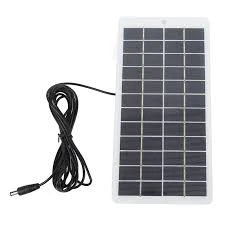Understanding the Efficiency of Monocrystalline Solar Panels and Their Benefits
Understanding Monocrystalline Solar Panel Efficiency
Monocrystalline solar panels are renowned for their high efficiency and aesthetic appeal, making them a popular choice for homeowners and businesses looking to harness solar energy. This article delves into the efficiency of monocrystalline solar panels, explaining what factors influence their performance and why they are often considered the best option for solar energy generation.
What are Monocrystalline Solar Panels?
Monocrystalline solar panels are made from a single continuous crystal structure of silicon. This manufacturing process results in panels that typically have a uniform appearance, being dark black in color, and rounded edges. Because of their high purity and crystallinity, they can achieve higher efficiency rates compared to other types of solar panels, like polycrystalline or thin-film solar panels.
Efficiency Ratings
The efficiency of monocrystalline solar panels usually ranges from 15% to 22%, with some high-performance models exceeding 23%. This efficiency refers to the percentage of sunlight that can be converted into usable electricity. The higher the efficiency, the more power can be generated from a smaller surface area, making monocrystalline panels particularly advantageous in space-limited installations.
Factors Affecting Efficiency
Several factors influence the efficiency of monocrystalline solar panels
monocrystalline solar panel efficiency

1. Quality of Silicon The purity of the silicon used affects how efficiently it can convert sunlight into electricity. High-quality silicon leads to higher efficiency rates.
2. Temperature Coefficient Monocrystalline panels typically have a lower temperature coefficient compared to other types. This means their efficiency decreases less at higher temperatures, making them ideal for warmer climates.
3. Cell Design and Technology Advances in technology, such as PERC (Passivated Emitter and Rear Cell) and bifacial designs, can enhance the efficiency of monocrystalline panels, allowing for greater energy capture.
4. Installation Angle and Orientation Proper installation that optimizes the angle and orientation towards the sun can significantly improve the energy output of the panels.
Lifespan and Warranty
In addition to their efficiency, monocrystalline solar panels often come with long warranties, typically ranging from 25 to 30 years. This long lifespan combined with high efficiency makes them a cost-effective choice in the long run, despite a higher initial investment compared to other types of panels.
Conclusion
In conclusion, monocrystalline solar panels are a highly efficient option for converting sunlight into electricity. Their superior efficiency ratings, coupled with technological advancements and durability, make them a leading choice in the solar energy market. For individuals and businesses looking to invest in solar energy, monocrystalline panels offer an effective solution that can lead to significant long-term energy savings.
-
Unlocking Energy Freedom with the Off Grid Solar InverterNewsJun.06,2025
-
Unlock More Solar Power with a High-Efficiency Bifacial Solar PanelNewsJun.06,2025
-
Power Your Future with High-Efficiency Monocrystalline Solar PanelsNewsJun.06,2025
-
Next-Gen Solar Power Starts with Micro Solar InvertersNewsJun.06,2025
-
Harnessing Peak Efficiency with the On Grid Solar InverterNewsJun.06,2025
-
Discover Unmatched Efficiency with the Latest String Solar InverterNewsJun.06,2025







